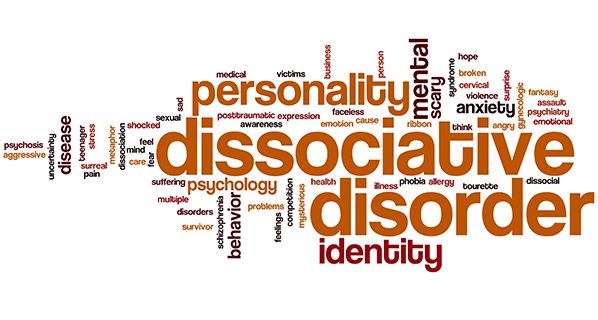Dissociative disorders – Symptoms and causes – What Are Dissociative Disorders?

Just about everyone has the capacity to dissociate. A mild form of dissociation is the day-dreaming state many have experienced while staring out a window. Another is when a driver can’t recall having travelled a short distance in their journey. There are varying degrees of dissociation. Some children develop the ability to dissociate to very deep levels in order to mentally escape during episodes of abuse. In cases of abuse and trauma, dissociation can be a protective mechanism.
The ability to dissociate does not mean you have been abused, but can’t remember the trauma.
Dissociation is also known as ‘altered states of consciousness’ or trance states. In some cultures these altered states are deliberately induced through rythmic drumming or dance, fasting, sleep deprivation or drugs. In this case the symptoms of dissociation are experienced within a cultural context with the specific intention of inducing such states. In western societies, the altered states have no reference point unless experienced as part of a spiritual or religious practice. It’s when they occur outside such practices and for no apparent reason that the person responds with fear and confusion.
‘Many people with Panic Disorder report the experience of dissociative symptoms as the reason why they panic’ (Arthur-Jones & Fox 1994). People diagnosed with Panic Disorder and sometimes Post-traumatic Stress Disorder mainly experience this condition.
Dissociation Symptoms
Dissociate symptoms are a particular set of symptoms commonly associated with Panic Disorder and spontaneous panic attacks. These symptoms are usually outside the normal range of experience for most people and can appear without an obvious trigger. It’s the power of the experience and the fact that symptoms seems to ‘come out the blue’ which cause the person to panic. Once a person is able to watch the progression of each attack, they begin to see that dissociation can often be the trigger for the anxiety symptoms which follow.
Types of Dissociation
Depersonalisation: Feeling like you are detached from your body, standing alongside, or having an out-of-body experience.
Derealisation: Feeling as if your or your surroundings are not real Looking at things through a ‘fog’. Feeling as if the ground is moving under your feet. Stationary objects appear to move.
The above symptoms may be accompanied by a sensitivity to light and sound. People can feel as if they are losing touch with reality and are going insane.
Some people can predict when the symptoms will occur as they are sometimes preceded by a tingling or electric sensation, or a wave of energy or heat passing through the body.

